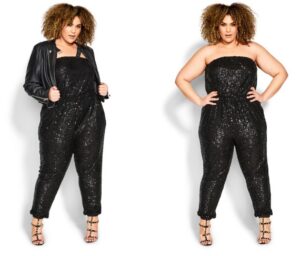Wear comfortable and stretchy clothing suitable for movement when bouldering, such as fitted leggings and a breathable top. Bouldering requires agility and flexibility, making it important to wear the right clothing for maximum performance and comfort.
When choosing what to wear bouldering, opt for comfortable and stretchy clothing that allows for a wide range of motion. Fitted leggings are a great choice for both men and women, as they provide flexibility and support. Pair them with a breathable top that wicks away sweat to keep you cool during intense climbs.
It’s also important to wear comfortable athletic shoes with good grip to help you stay stable on the rock surface. By wearing the proper attire, you can fully enjoy your bouldering experience while staying comfortable and safe.
Climbing Shoes: Finding The Perfect Fit
Climbing shoes play a crucial role in bouldering. Choosing the right type of climbing shoes can significantly impact your performance on the wall. When it comes to selecting the perfect fit, there are a few factors to consider. First and foremost, determining the right size is essential. Climbing shoes should fit snugly, but they should not cause pain or discomfort. Pay attention to the sizing chart provided by the manufacturer, but remember that different brands may have slightly different sizing guidelines. Ensure a snug fit by trying on different pairs and experimenting with different styles and designs. The ideal fit will allow for precise footwork and enhanced grip on the rock. Keeping these tips in mind will help you find the perfect climbing shoes for your bouldering adventures.
Apparel For Bouldering: Comfort And Mobility
Selecting breathable and moisture-wicking fabrics
- Key features of bouldering pants and shorts: When it comes to bouldering, it’s essential to choose pants or shorts that offer both comfort and mobility. Look for breathable fabrics that allow for airflow and keep you cool during intense climbs. Additionally, opt for moisture-wicking materials that can effectively manage sweat and keep you dry.
- Choosing the right top for unrestricted movement: To ensure unrestricted movement while bouldering, your top should provide ample flexibility. Look for tops made from stretchable materials that won’t restrict your range of motion. Additionally, consider lightweight and quick-drying fabrics that can handle sweat and won’t weigh you down during your climbing sessions.
Harnesses And Chalk Bags: Essential Gear For Safety And Grip
When bouldering, it is crucial to have the right gear to ensure safety and enhance grip. One of the essential pieces of gear for bouldering is a climbing harness. There are different types of climbing harnesses available in the market, each designed for specific purposes. Some popular types include the full-body harness, sit harness, and chest harness.
When selecting a harness, it is important to consider key features such as comfort, adjustability, durability, and weight. A comfortable harness with adjustable straps ensures a proper fit and allows for a wide range of movement while climbing. Durability is vital to withstand the wear and tear associated with bouldering, while a lightweight harness reduces strain and fatigue.
Alongside the harness, another essential gear for bouldering is a chalk bag. Chalk bags are used to hold climbing chalk, which helps to keep hands dry and improve grip. The benefits of using chalk bags include reduced sweat, increased friction, and better control on the rock or wall.
In conclusion, when it comes to bouldering, harnesses and chalk bags are essential gear for safety and grip. Be sure to choose the right harness type based on your needs and consider key features such as comfort, adjustability, durability, and weight. Additionally, do not forget the importance of a chalk bag for better grip and control while climbing.
Climbing Accessories: Enhancing Performance And Protection
Climbing gloves play a crucial role in bouldering, providing both performance enhancement and protection. They offer a secure grip on holds, preventing slips and reducing fatigue. The additional support they provide allows climbers to exert more energy on their next move. Utilizing finger tape can further enhance this support, particularly for protecting and stabilizing finger joints. By taping specific areas prone to strain or injury, climbers can reduce the risk of sprains and strains.
There are several must-have accessories for bouldering safety. Crash pads are essential for protecting against falls by providing a cushioned landing surface. Chalk is used to improve grip by absorbing sweat and moisture from climbers’ hands. A brush helps clean holds from dirt or debris for better grip. Climbing shoes with sticky rubber soles are crucial for precise footwork and grip on the rock. Wearing comfortable clothing that allows for freedom of movement is also important for flexibility and agility during climbs.
Protection Gear: Safety First
When it comes to bouldering, wearing the right protection gear is of utmost importance. Among the essential pieces of gear, a helmet is crucial for your safety. In the event of a fall, a helmet can protect your head from injury. It is always recommended to invest in a good-quality helmet that fits properly and has adequate padding.
Crash pads are another important piece of gear that provides cushioning when you fall. They help reduce the impact on your body, especially your ankles, knees, and hips. A crash pad should be large enough to provide ample coverage and should have a thick foam layer for effective shock absorption.
In addition to a helmet and crash pad, using elbow and knee pads can provide additional protection. These pads are designed to absorb impact and protect your joints from injuries when scraping against the rock. They are especially useful during bouldering sessions that involve dynamic moves and high-risk falls.
Weather Considerations: Adapting To Changing Conditions
When it comes to bouldering, dressing appropriately for the weather is essential. Adapting to changing conditions is crucial for a comfortable and enjoyable climbing experience. Whether you’re faced with hot or cold weather, layering techniques can help you control your body temperature.
For hot weather, choose lightweight and breathable clothing that allows for maximum mobility. Opt for moisture-wicking materials that will keep you cool and dry. Consider wearing shorts or lightweight pants and a moisture-wicking top.
In colder weather, layering is key. Start with a moisture-wicking base layer to keep you dry and warm. Add an insulating layer such as a fleece or down jacket for extra warmth. Finally, top it off with a waterproof and windproof shell to protect you from the elements.
Don’t forget to pack rain gear essentials for wet climbing. A waterproof jacket and pants will keep you dry during rainy conditions. Consider investing in a pair of waterproof climbing shoes or shoe covers to prevent slippery feet.
Style Guide: Staying Stylish While Bouldering
When it comes to bouldering, it is important to wear apparel that not only provides comfort and functionality but also reflects your personal style. Whether you are a fashion enthusiast or simply want to add a touch of flair to your climbing outfit, there are plenty of fashionable options available. Incorporating trendy colors and patterns into your bouldering attire can help you make a statement while tackling the rock wall. Accessorizing your climbing outfit with statement jewelry, trendy hats, and stylish backpacks can further enhance your overall look. The key is to find a balance between style and functionality, ensuring that your chosen apparel does not restrict movement or compromise safety. By choosing fashionable options without compromising functionality, you can stay stylish while bouldering.
Proper Care And Maintenance: Extending The Lifespan Of Your Gear
To ensure your climbing gear lasts a long time, proper care and maintenance are crucial. Cleaning and drying climbing shoes regularly is essential to prevent odor and maintain their performance. After each climbing session, remove any dirt or debris from the shoes using a soft brush or cloth. For deeper cleaning, wash them by hand using mild soap and water.
Another important aspect is washing and storing climbing apparel, such as pants and jackets. Follow the manufacturer’s instructions for cleaning, using gentle detergents meant for delicate materials. Always air dry your climbing apparel to maintain its integrity and prevent shrinkage or damage caused by heat.
In addition to cleaning, it’s important to regularly inspect your gear, including harnesses, carabiners, and ropes. Check for any signs of wear and tear, such as frayed edges or weakened stitching. Replace any damaged gear immediately to ensure your safety while bouldering.

Credit: gearjunkie.com
Frequently Asked Questions On What To Wear Bouldering
What Do People Wear To Boulder?
People typically wear comfortable and flexible clothing, such as athletic shorts or leggings, along with a t-shirt or tank top when bouldering. It’s important to choose clothing that allows for ease of movement and isn’t too restrictive. Additionally, climbers often wear specialized climbing shoes to provide better grip on the rock surfaces.
Can You Boulder In Jeans?
Yes, you can boulder in jeans. Jeans provide durable and comfortable clothing for bouldering. However, it is recommended to wear stretchy and flexible pants specifically designed for climbing to ensure better mobility and performance.
Can I Wear Joggers For Bouldering?
Yes, you can wear joggers for bouldering. They provide comfort, flexibility, and freedom of movement. However, it’s important to choose joggers made from durable and stretchy material to withstand the rugged environment and allow unrestricted climbing.
Can You Go Bouldering With Shorts?
Yes, you can go bouldering with shorts. Shorts offer flexibility and freedom of movement while climbing. However, it’s important to choose durable shorts that provide enough coverage and protection for your legs.
Conclusion
Choosing the right attire for bouldering is crucial for both performance and safety. Opting for flexible and durable clothing, such as moisture-wicking fabrics and stretchy pants, will allow you to move freely and comfortably on the wall. Additionally, don’t forget to invest in appropriate footwear and protective gear, such as a helmet, for added safety.
By following these guidelines, you’ll be able to fully enjoy the bouldering experience while maintaining comfort and protection.




